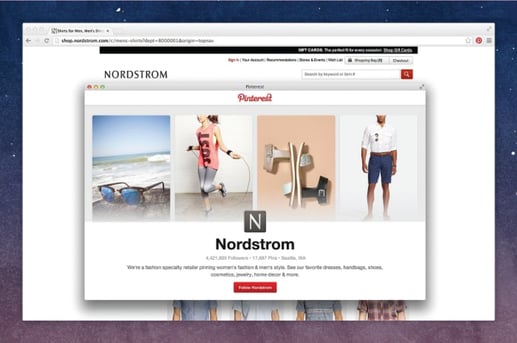Net Briefs - August '14

Organic Search Quality Rating Guide Leaked...Again
Google has, once again, revamped the guidelines used by its independent team of search quality raters, and once again, it has been leaked. The 160-page document, which provides insights into how the search engine defines high-quality and low-quality Web pages (and how raters evaluate sites), is a valuable resource for any search engine optimization professional seeking a broader and better organic search presence. Discover several important highlights from the fifth version of Google's Quality Ranking Guidelines at wsm.co/5gquality.
Pinterest Gets Flashy
Pinterest unveiled a flashier follow button to help brands grow their audience on the social network. The new button appears in a small dialog box and includes a preview of the brand's latest pins. From the dialog box, consumers can follow without leaving the websites they are browsing. Pinterest notes that brands can add the button to their sites by copying and pasting a couple of lines of code to their Web pages. Brands already using the original follow button aren't required to do anything to get the new version.

Marketers Not Responsive to Responsive
Despite the mobile momentum that has taken the tech world by storm, many email marketers are still not optimizing their campaigns for the small screen. In fact, recent YesMail data reveals that even though there is a 21 percent positive difference in click-to-open rates for emails with a responsive design, only 1 percent of the surveyed marketers send responsive emails exclusively. In fact, 44 percent use responsive design in less than half of their emails, while 31 percent don't use responsive design at all.
Yahoo! 100% Visibility for Display Ads
Brands have the ability to run display ad campaigns at a 100 percent viewability rate, thanks to Yahoo's new vCPM (viewable cost per thousand) product. The vCPM product, dubbed Prime View, leverages the SafeFrame protocol, a standard for display ad viewability from the Interactive Advertising Bureau (IAB). Yahoo notes that Prime View should help increase campaign performance by reducing wasted impressions without making dramatic changes to workflow, reporting or creative.
A Gem of a Deal
LivingSocial is getting personal with daily deal shoppers, thanks to some new features. For starters, LivingSocial unveiled a "Daily Gem" initiative, which provides consumers with extra savings on certain offers - for example, if a deal is used by 3 p.m., it will save shoppers an extra 15 percent. The Daily Gem deal is based on shoppers' preferences and is featured on users' LivingSocial accounts as well as delivered via email daily. LivingSocial is also giving merchants more control over promotions. For instance, through the LivingSocial Flex and LivingSocial Select programs, merchants can get their deal published on LivingSocial's website and mobile app in as little as five days. They are also offering more targeting options.
Twitter Data Goes Organic
Twitter is providing visibility into the reach of organic tweets, thanks to a new analytics dashboard that the social network released for verified users, advertisers and Twitter Card publishers. Until now, marketers only received information on their promoted tweets. The upgraded dashboard includes data on the total impression of organic tweets, a breakdown of how people are engaging with tweets as well as an hour-by-hour look at the first day of a tweet. To view a particular tweet's analytics, users just have to click on the tweet inside the dashboard.
Top Programming Languages Ranked
Everyone seems to be interested in learning to code, but with which language should they begin? Based on the results of a research study from IEEE Spectrum, the answer is Java (followed by C, C++, Python and C# to round out the top five). Dozens of programming languages were analyzed based on metrics from 10 data sources (including Google, Github, Stack Overflow, Reddit, Career Builder, Dice, Topsy and IEEE Xplore), showing which languages are in the highest demand in the professional workplace today and which are most popular on social sites and open source hubs.

Subscribe to Our Newsletter!
Latest in Marketing









